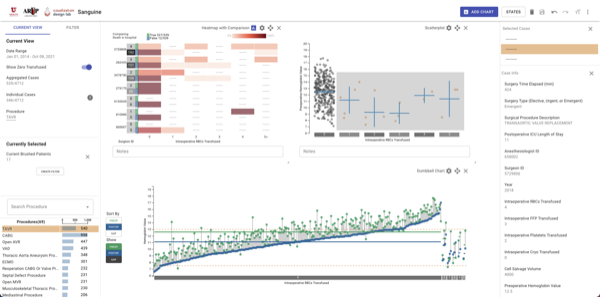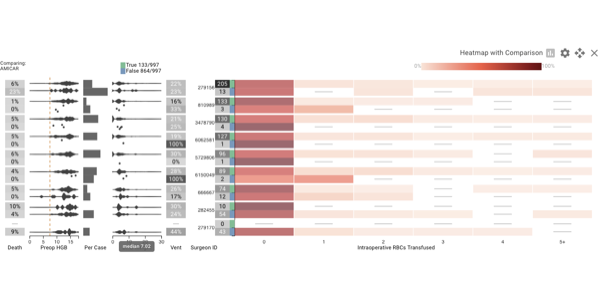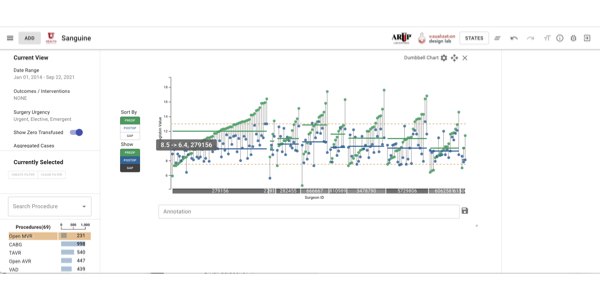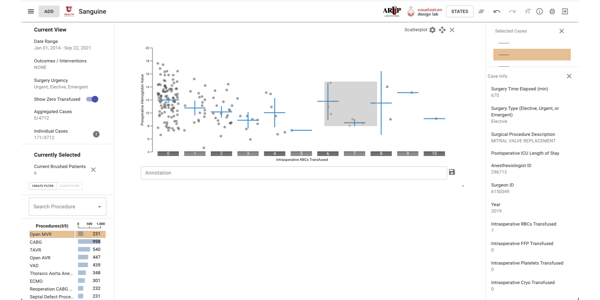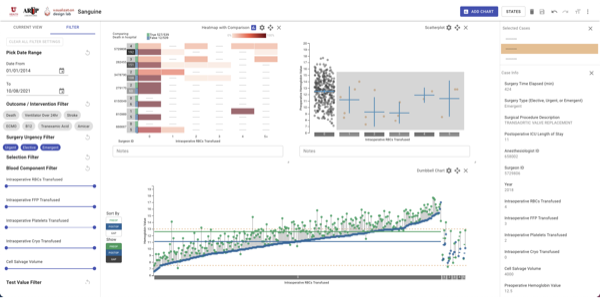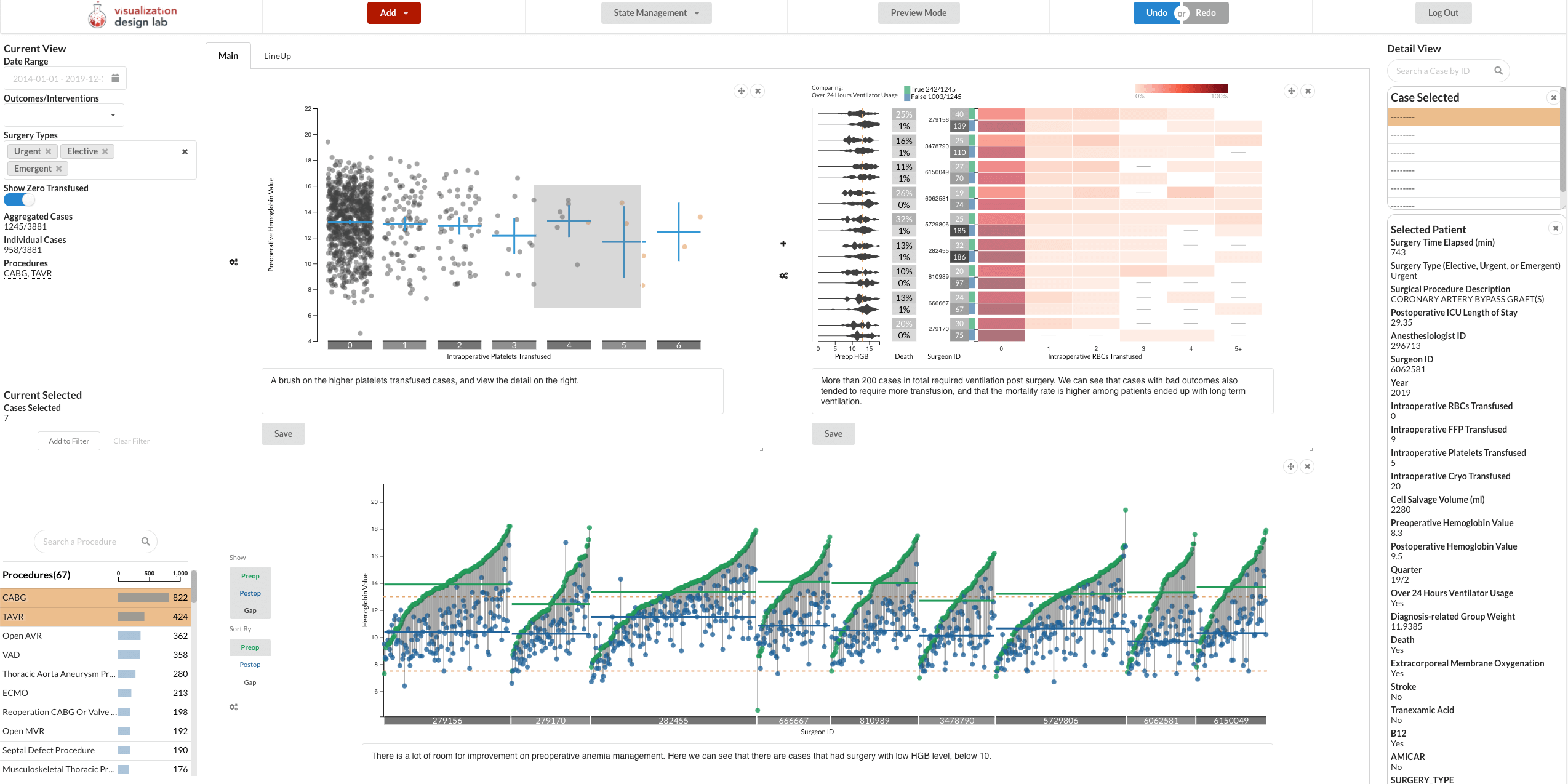
Abstract
Blood transfusion is a frequently performed medical procedure in surgical and nonsurgical contexts. Although it is often necessary or even life-saving, it has been identified as one of the most overused procedures in hospitals. Unnecessary transfusions not only waste resources but can also be detrimental to patient outcomes. Patient blood management (PBM) is the clinical practice of optimizing transfusions and associated outcomes. In this paper, we introduce Sanguine, a visual analysis tool for transfusion data and related patient medical records. Sanguine was designed with two user groups in mind: PBM experts who oversee blood management practices across an institution and clinicians performing transfusions. PBM experts use Sanguine to explore and analyze transfusion practices and its associated medical outcomes. They can compare individual surgeons, or compare outcomes or time periods, such as before and after an intervention regarding transfusion practices. PBM experts then curate and annotate views for communication with clinicians, with the goal of improving their transfusion practices. We validate the utility and effectiveness of Sanguine through case studies.Citation
Haihan Lin,
Ryan A. Metcalf,
Jack Wilburn,
Alexander Lex
Sanguine: Visual Analysis for Patient Blood Management
Information Visualization, 20(2-3): 123-137, doi:10.1177/14738716211028565, 2021.
BibTeX
@article{2021_ivi_sanguine,
title = {Sanguine: Visual Analysis for Patient Blood Management},
author = {Haihan Lin and Ryan A. Metcalf and Jack Wilburn and Alexander Lex},
journal = {Information Visualization},
publisher = {SAGE},
doi = {10.1177/14738716211028565},
url = {https://doi.org/10.1177%2F14738716211028565},
volume = {20},
number = {2-3},
pages = {123-137},
month = {August},
year = {2021}
}
Note
This is the journal version of a previously published workshop paper.
Acknowledgements
We thank Dr. Vikas Sharma, Dr. Joseph Tonna, Dr. Josh Zimmerman, and Dr. Candice Morrisey for their input and feedback. We also thank the support from the Enterprise Data Warehouse and the Center for High Performance Computing at the University of Utah. This project is funded by ARUP laboratories; the National Science Foundation (IIS 1751238); and the National Institutes of Health (1S10OD021644-01A1).
Images
These images are not part of the original paper and licensed using CC BY 4.0. If you use these images, please cite the paper. Click on the images for full resolution.
